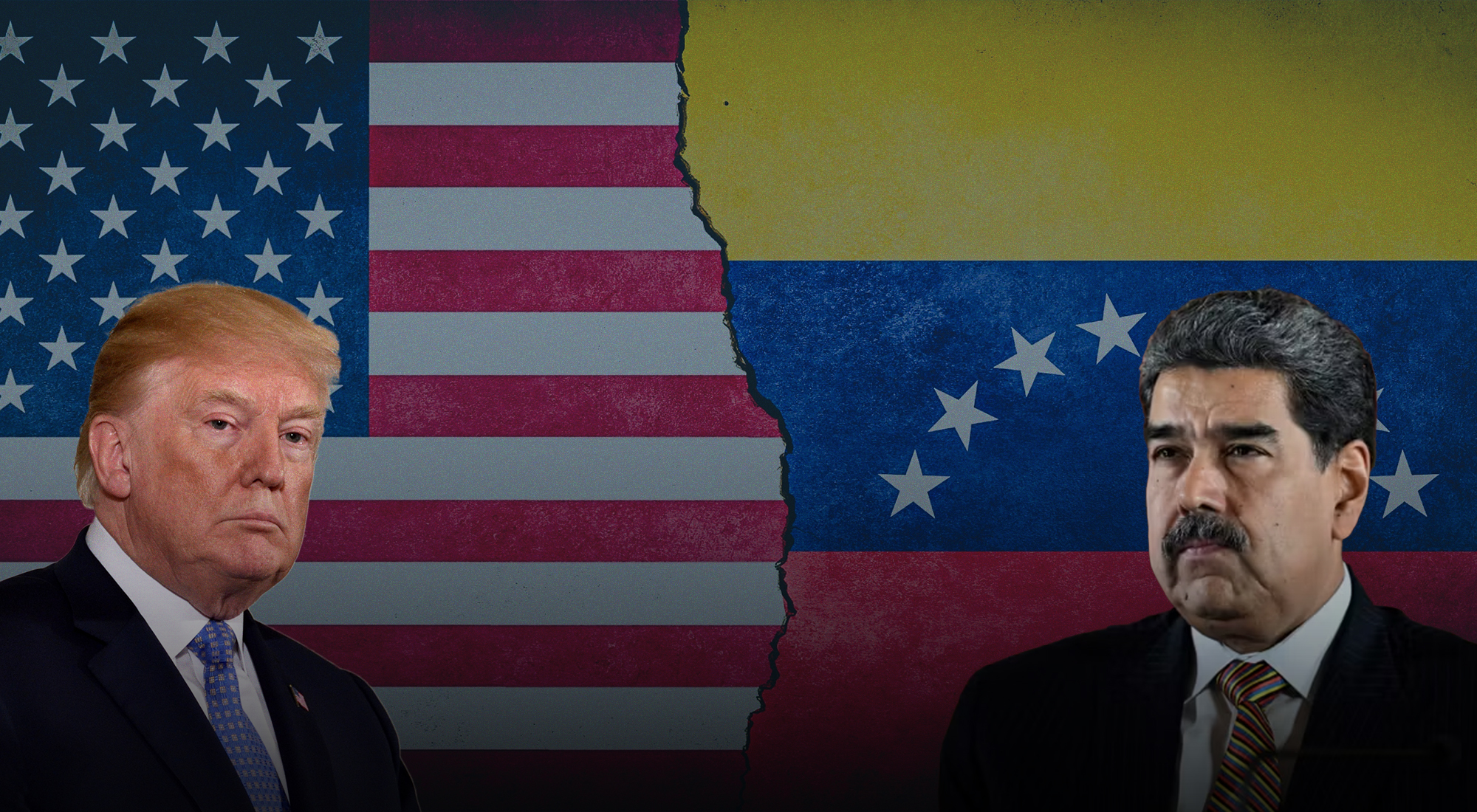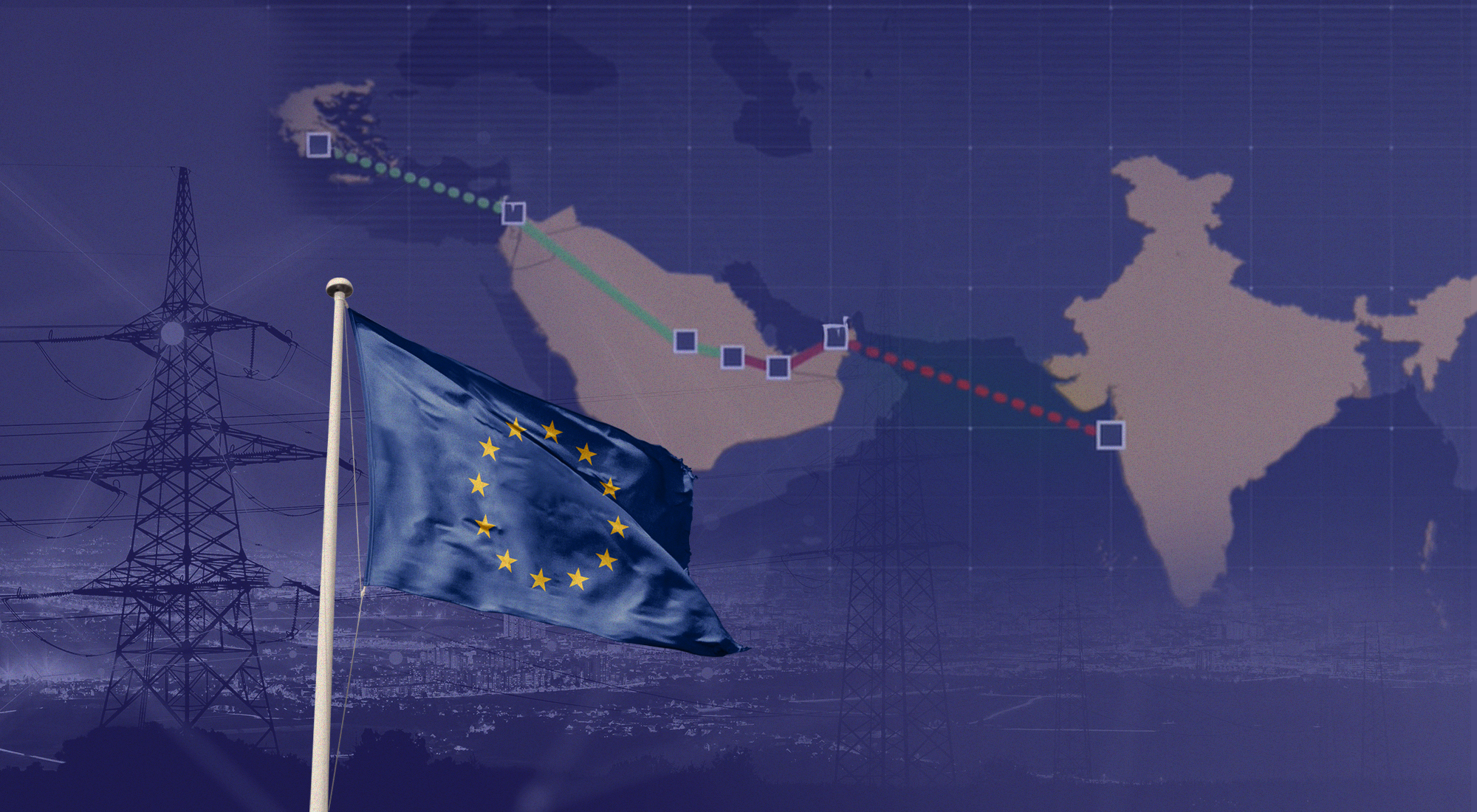Asymmetric warfare refers to conflicts between nations or groups with disparate military capabilities and strategies.[1] Asymmetric activities include resistance movement, insurgency and counterinsurgency, guerrilla warfare, cyberattacks and operations, etc. The use of unmanned surface vehicles (USVs) is considered the most recent example of asymmetric tactics in modern conflicts.
The Russia-Ukraine war is among the best-known recent examples of asymmetric warfare. The conflict between Russia and Ukraine has been asymmetrical since its beginning in 2014. Russia has supported and the latter has fought alongside proxy separatists in the Donetsk and Luhansk Provinces, which sparked the Donbas war.[2] Since February 2022, Kyiv, the weaker party, has been engaging in asymmetric warfare against invading Russian forces. Russia adapted to Ukrainian fighting tactics, thwarted Kyiv’s counterattack attempts more than once and started employing asymmetric warfare tactics as well.
This paper attempts to examine the impact of asymmetric warfare on the prospects of the Ukrainian-Russian war, by analyzing the most significant asymmetric warfare strategies and tactics that the two sides have employed, and the impact of asymmetric warfare on the development of the field situation and the course of the war.
Ukraine Asymmetric War
Ukraine has been using a variety of asymmetrical strategies, including non-violent resistance, guerrilla warfare, support for the Russian insurgency and the use of USVs.
Before the beginning of the conflict, Ukraine prepared for resistance and guerrilla warfare against Russian troops.[3] Since the war began in February 2022, Ukrainian resistance in occupied territories has been growing and adapting. There are two forms of Ukrainian resistance: peaceful and armed/violent. Armed resistance networks, known in Ukraine as partisans or “community volunteers”, are making their presence felt behind the frontlines while nonviolent resistance groups continue to expand. The Ukrainian military began training partisans in the months before the outbreak of the war as Russia massed troops near the borders.[4]
The activities of partisans include sabotage operations against critical infrastructure and military assets, targeted assassinations against collaborators and officials installed by Moscow in occupied territories and information gathering and transmission from the occupied areas (e.g., identifying Russian targets for Ukrainian artillery and long-range rockets). The fighters are blending into the local population once they finish the job.[5]
Ukrainian citizens are also involved in nonviolent acts of resistance. In fact, this type of peaceful resistance suits a broader swathe of the population than the much riskier violent resistance.[6] Nonviolent actions include large-scale street protests, the blocking of roads, the protection of critical infrastructure and symbolic acts such as the placing of pro-Ukrainian graffiti and leaflets in public places and destroying pro-Russian flags and symbols.[7] Ukrainian nonviolent civil networks have shown the ability to move beyond small-scale symbolic actions and toward more ambitious campaigns like the large-scale production of counterfeit Ruble notes in early 2023 and the campaign in September 2023 to disrupt the elections in occupied territories. Ukrainian civilians also engage in social media campaigns to subvert Russian propaganda, and independent civilian networks have grown dramatically in size and scope, despite receiving little coverage from the media.[8]
In addition to Ukrainian partisans, insurgent Russian groups, backed by Ukraine, carried out cross-border raids into Russian territory, aimed at disrupting Russia’s stability and turning international attention to Ukraine. Pro-Ukrainian all-Russian volunteer forces conducted isolated cross-border raids into Belgorod Province on 22 March, 1 June, and 4-5 June in 2023. These raids appear to have been limited. In March 2024, elements of four groups, including all-Russian pro-Ukrainian Russian Volunteer Corps (RDK), Freedom of Russia Legion (LSR), Siberian Battalion, and Ichkerian volunteers, conducted cross-border raids into Russia (in Belgorod and Kursk provinces). RDK reportedly seized a Russian administrative building in the Belgorod province border area and claimed they destroyed an ammunition depot in Kursk. The purpose of these raids was to sabotage Russia’s presidential election in March 2024 and draw attention to Ukraine. Compared to the previous small-scale raids, the March raids lasted for over six days.[9] Bloomberg reported that the all-Russian pro-Ukrainian incursions into Belgorod Province are forcing the Russian military to divert forces from the frontline to Belgorod province.[10] On a few occasions, Ukrainian partisans themselves carried out irregular cross-border ground attacks as well.[11]
Most importantly, by using USVs, Ukrainian military targeted Russia’s Black Sea Fleet, oil export infrastructure and refineries and aviation, and air defense capabilities.
Ukrainian drones and unmanned surface vessels attacked Russian naval facilities and warships, particularly in the Black Sea. The Ukrainian campaign against Russia’s Black Sea Fleet (BSF) began in earnest in April 2022, when Ukrainian forces succeeded in sinking the missile cruiser Moskva, the flagship of the fleet. The most recent of the Ukrainian strikes was reported on 21 April, when Ukrainian forces struck and damaged the BSF Kommuna submarine support ship, the world’s oldest active-duty naval vessel, in Sevastopol, Crimea.[12] It has been reported that one-third of all the warships of Russia’s Black Sea Fleet were sunk or disabled. The Ukrainian strike campaign has forced the BSF to redeploy the majority of its naval assets away from its main base in Sevastopol, further eastward away from Ukrainian missiles and USVs.[13] In fact, Ukraine’s use of unmanned vehicles and surface vessels has shown what large-scale future naval warfare might look like. It has also shown that even a smaller country without a large navy can pose a serious asymmetric threat to a great power with a large fleet.[14]
Ukrainian forces conducted a series of successful drone strikes against Russian oil refineries and infrastructure. For instance, they hit refineries in Kaluga and Samara Provinces and Krasnodar Krai on 14-17 March 2024. These refineries process an estimated more than 10% of Russia’s annual oil refinement output. Ukraine’s drone strikes on Russian oil export infrastructure put 60% of Russian exports at risk.[15] Russian refinery throughputs have decreased to 5.1 million b/d, a 400,000+ b/d drop since the beginning of 2024 and the lowest run rates since October 2023.[16] As of early April 2024, Ukrainian drone strikes had shut down around 14% of Russia’s total refining capacity.[17] Moreover, recent Ukrainian strikes against oil refineries reportedly caused a spike in Russian domestic oil prices.[18]
Ukraine’s attacks on Russian oil refineries have deepened tensions with the U.S. The latter urged Kyiv to halt attacks on Russia’s energy infrastructure, as they are likely to raise global energy prices and invite more aggressive Russian retaliation inside Ukraine.[19] However, Ukrainian forces continued drone strikes against Russian energy infrastructure facilities.[20] It appears that these strikes are a necessary component of Ukraine’s campaign to use asymmetric means to degrade industries that supply and support the Russian military.[21]
Additionally, Ukrainian forces started targeting Russian aviation assets, air defense, and radar detection capabilities. For instance, in April 2024, Kyiv’s forces targeted aviation assets in western Russia, and the Yeysk, Kursk and Engels-2 air bases in Russia deep inside Russian territories inflicted some damage.[22] Ukrainian strikes against Russian aviation assets in occupied Crimea, as well as within Russia, appear to represent a coordinated and wide-reaching series of strikes specifically targeting Russian aviation, air defense, and radar detection capabilities.[23]
According to analysts, Ukraine’s long-range drone attacks into Russia were aimed at disrupting President Putin’s governance and his declaration that the war had turned in Moscow’s favor. Drone strikes, in particular, against targets deep inside Russia seemed to be proof of Ukraine’s growing sophistication in domestic drone technology and its willingness to take the war to Russia. So far, Ukraine’s main asymmetric actions have been the sabotage of the Crimean Bridge in the Black Sea and drone strikes on Moscow.[24]
Russia’s Asymmetric Moves
Russia has been employing different asymmetric tactics, including backing Ukrainian insurgency, guerrilla warfare, and the use of USVs.
As previously demonstrated, since the very beginning of the Russian-Ukrainian conflict in 2014, Russia, despite being the stronger party, has backed proxy separatists in the Donbas war. Eventually, Russia annexed the two Donbas provinces, along with two other provinces in the south, in September 2022.
Russia also deployed the paramilitary Wagner group in Donbas in 2014. During the most active phase of the war in the region (2014-15), Ukrainian security services identified nearly 1,600 Wagner mercenaries fighting as Russian proxies.[25]
And once again, Russia deployed the Wagner group in Ukraine in late March 2022, when the Russian attempt to take Kyiv failed. The Wagner Group was deployed on the frontlines, especially in the Battle of Bakhmut, which lasted for more than 10 months. In May 2023, the Ukrainians withdrew from Bakhmut, and Yevgeny Prigozhin, the former leader of the group, declared victory. However, infighting between Prigozhin and the Russian military establishment reached a dramatic climax in late June 2023, when Prigozhin launched an uprising against the Russian defense ministry and crossed from Ukraine back into Russia. The rebellion lasted for two days before it was called off. Wagner’s elements were granted amnesty and relocated to Belarus. Prigozhin was later killed along with nine other people when his business jet crashed north of Moscow two months after the rebellion.[26] Recently, it seems that Russia may redeploy some former Wagner Group elements serving in Africa Corps to Belgorod Province, a border area subject to frequent cross-border attacks by pro-Ukrainian Russian insurgents.[27]
Additionally, Russia uses drones to attack Ukraine’s energy infrastructure in an attempt to bring down the country’s energy grid, cause long-term damage to Ukraine’s war-waging capabilities, and lower public morale.[28] Russian forces have heavily targeted Ukrainian energy infrastructure during missile and drone strikes through March and April 2024, exploiting already-degraded Ukrainian air defense capabilities. For instance, on 22 March, Russian forces carried out one of the war’s largest missile and drone attacks on energy infrastructure, which damaged power plants and caused blackouts for more than a million Ukrainians.[29]
Recently, Russian forces started targeting Ukrainian transportation infrastructure to interdict Ukrainian ground lines of communication (GLOCs) and, thus, limit Ukraine’s capacity to sufficiently distribute manpower and materiel to critical sectors of the front. On 19 April, Russian forces heavily targeted Ukrainian transportation infrastructure in Dnipropetrovsk Province.[30]
A Mutual Drone War between Ukraine and Russia
UAVs, particularly drones, have revolutionized the military. They have altered the face of modern battlefield operations and rendered the battlefield “transparent”, greatly hindering the ability of enemy forces to move undetected. In addition, drones offer not only enhanced surveillance and reconnaissance but also tactical offensive capabilities.[31] In short, they stand as the most deadly and expendable asymmetric methods used in modern warfare.
Drones have become a critical weapon for both Ukraine and Russia in the war to such an extent that it is described as blitzkrieg drone warfare. As the weaker party in the conflict, Ukraine heavily deployed cheap drones, which initially gave its forces an advantage on the battlefield. In addition, Ukrainian forces rely largely on drones to halt or repel Russian ground assaults, especially since the Russians have stepped up their offensive on the eastern front in the winter and spring of 2024. The task of Ukrainian drones has become more critical because Ukrainian forces face significant challenges, including a lack of ammunition, and a shortage of well-trained troops and air defense systems.[32]
In return, Russian forces quickly adapted and began mass-importing drones from Iran as well as mass-producing their own drones. They are expanding their use of drones. What followed was an offense-defense arms race and an overabundance of disposable, deadly drones, and electronic warfare devices (jammers) that disrupted their flights.[33] As Russian forces outpace Ukrainians in building and deploying aerial vehicles, even though they are still less innovative,[34] Kyiv is racing to produce more than a million drones this year. In February 2024, Ukrainian President Volodymyr Zelensky formalized the role of drone operators, establishing a new military branch called the Unmanned Systems Forces. Ukrainian factories are producing a wide range of drone models, including ones that strike inside Russia.[35]
First-person view (FPV) drones are the quintessential asymmetric weapon and are described as effectively “cruise missiles in a backpack. While both sides in each theater use FPV drones, it is the Ukrainian forces that currently have a marginal edge in the development and deployment of attack drones.[36] Nevertheless, Russian forces continue to make efforts to develop their drone operation capabilities. They are developing a new military specialty for FPV drone operators[37] and deploying more resilient drones against Ukrainian jammers in critical sectors of the frontline.[38]
In fact, the skies over Ukraine’s frontlines are so crowded with drones looking for any signs of movement. Because of this, it is difficult for Ukrainian and Russian forces to move around the battlefield without being spotted and destroyed.[39]
Russian and Ukrainian forces have heavily integrated drones into their reconnaissance-fire complexes along the frontline, and Russian forces rely on drones both before and during assaults.[40] Ukraine has had growing success in attacking distant targets, such as the attack on Tu-22 bombers at Soltsy-2 Airbase in August 2023, numerous assaults on the Kerch Bridge in Crimea or frequent attacks on energy facilities deep inside Russia.[41]
Cyberattacks and Cyber Operations
Cyberattacks and operations, as asymmetric tactics, are an integral part of the Russian-Ukrainian conflict. It is believed that the conflict has developed into the first cyber warfare in history.[42]
According to the Global Cybersecurity Forum, the number of mutual cyberattacks and operations between the two sides in the first year of the war was more than 4,500 attacks.[43] The Swiss-based CyberPeace Institute put the number at 1,100 attacks, which similarly targeted public administration, financial, and media sectors in Russia and Ukraine.[44]
In early February 2024, Ukraine’s secret services claimed that it had dealt with 10,000 major cyberattacks in nearly two years of war, with a daily average of 13. The CyberPeace Institute, in a report published in December 2023, concluded that it had recorded at least 300 cyberattacks against Russian civilian agencies since the beginning of the war until September 2023 and that the main attacker is the so-called IT Army of Ukraine, supported by the Kyiv government. The institute also confirmed 574 attacks against Ukrainian civilian agencies in the same period.[45]
The cyberattacks and operations have been deployed with the aim to destroy data and systems, disrupt critical infrastructure and services, steal and erase government data, conduct reconnaissance and espionage, and execute disinformation campaigns.[46] It has been reported that Distributed Denial of Service (DDoS) attacks made up the largest number of recorded incidents. For instance, over the first year of the war, DDoS attacks amounted to 79% of all incidents, and there is a trend toward crowdsourcing these attacks.[47]
Russia was the first to start cyberattacks in the ongoing war, and it increased the targeting of users in Ukraine by 250% in 2022 compared to 2020. Russian attackers focus heavily on the Ukrainian government and military entities, critical infrastructure, utilities and public services, and the media and information space.[48]
Ukraine has recorded fewer cyberattacks on Russia, most of which were aided by other actors, most importantly the U.S. and NATO.[49] The European Union assigned a team of cybersecurity experts to help Ukraine fight off cyberattacks from Russia.[50] On the other hand, Ukraine claimed that Russia is using its cooperation with China to carry out cyberattacks against Ukraine.[51]
The U.S. and NATO countries are exposed to Russian cyberattacks. In the first year of the war, the targeting of users in NATO countries by Russia increased by over 300%. In one incident, Russia deployed malware that disabled satellite systems, temporarily cutting off more than 30,000 internet connections across Europe.[52]
The impact of Asymmetric Warfare
To begin with, Ukrainian civil resistance is vital to countering Russian propaganda and framing the terms of any future negotiations and remains the most potent argument for continued international support. But guerrilla warfare on both sides increases the attritional nature of the war and may prolong the conflict.
Ukrainian drone attacks against military and non-military targets inside Russia put more strain on Russia’s air defense system.[53] Drone strikes on Russian oil refineries, however, have not yet had a major effect on the country’s refining output or the supply of crude oil and distillate products from abroad or domestic sources.[54] Drone strikes from both sides, though, not only impact their immediate target but disrupt the larger operational ecosystem of the targeted force.[55]
Russian cyberattacks and operations did not achieve the desired outcomes[56] or achieved little success at most.[57] Put differently, Russia’s disruptive cyber and information operations against Ukraine have proven less decisive than previously feared. Ukrainians have shown themselves to be extraordinarily resilient, and Western nations are helping them to strengthen their infrastructure.[58] During the war, the number of cyber-conflicts rose, but not the number of concessions or even severe cyber operations.[59]
The surge in small drones has turned the area beyond either side of the zero line — normally known as “the gray zone” — into “the death zone”. This is why the course of the war has been taking the form of positional engagements since at least the failure of the Ukrainian counteroffensive in the summer of 2023. A positional war is characterized by relatively static frontlines and regular combat that produces little movement. The aim of such combat is generally either to create forward progress through steady if small, advances or to create conditions to restore maneuver to the battlefield.[60] The threat of drones is largely preventing either side from making significant breakthroughs.
Conclusion
After more than two years of the war, it can be stated that the two parties are engaged in a positional war. As neither Russia nor Ukraine have been able to achieve symmetrical superiority, they seem to be trying to have an asymmetric impact while increasing their combat capacities. However, asymmetric actions can only be effective for a limited period. Drone attacks on civilian targets in Odessa or Moscow won’t result in victory for the frontlines. In other words, it is unlikely that Russia or Ukraine will win a war as a result of the asymmetric efforts.[61] The most important impact of asymmetric tactics is their role in psychological warfare efforts.
One may draw the conclusion that the prospects of the Russian-Ukrainian war are correlated with the use of asymmetric tactics. The war has entered a phase of attritional and positional warfare due to a variety of factors, including the employment of asymmetric strategies and moves by both sides. At the same time, the current state of the war is pushing both sides to heavily employ asymmetric warfare techniques, particularly drone attacks, guerrilla warfare, the use of militias, and the targeting of civilian areas and populations.
To establish military superiority, each side needs to integrate complex warfare systems in both the symmetric and asymmetric domains. One could argue that Russia has an advantage in this area, and Ukraine will only develop its integrated warfare capacity if the West continues to support it.[62] With the resumption of U.S. military assistance to Ukraine in April 2024, it seems that the asymmetric warfare race will continue in and over Ukraine. The war might go on longer in such a scenario.
[1] Alexander Noyes and Daniel Egel, “Winning the Irregular World War,” RAND, November 6, 2023, https://shorturl.at/ftuwz.
[2] Ibid.
[3] Otto C. Fiala, “Resilience and Resistance in Ukraine,” Small Wars Journal, December 31, 2022, https://shorturl.at/BGN34.
[4] Andrew E. Kramer, “Behind Enemy Lines, Ukrainians Tell Russians ‘You Are Never Safe’,” The New York Times, August 17, 2022, https://shorturl.at/fkQZ3.
[5] Otto C. Fiala, “Resilience and Resistance…,”; Andrew E. Kramer, “Behind Enemy Lines…”
[6] Otto C. Fiala, “Resilience and Resistance…”
[7] Ibid.
[8] Nicholas Krohley, “Ukrainian Civilians Are Pioneering the Art of Resistance,” Foreign Policy, February 28, 2024, https://shorturl.at/fvQ12.
[9] Institute for the Study of War, Russian Offensive Campaign Assessment, March 15, 2024, https://shorturl.at/oxGIJ; Institute for the Study of War, March 17, 2024, https://shorturl.at/kmyAU; Institute for the Study of War, March 18, 2024, https://shorturl.at/fgpqT.
[10] “Attacks Across Russia Border Bring Home Costs of Putin’s War,” Bloomberg, March 20, 2024, https://shorturl.at/cuJQ9.
[11] Murat Aslan, “Symmetric and Asymmetric Warfare in the Russia-Ukraine War,” Politics Today, September 26, 2023, https://shorturl.at/pDELZ.
[12] Institute for the Study of War, Russian Offensive Campaign Assessment, April 21, 2024, https://shorturl.at/ewAFL.
[13] Institute for the Study of War, March 17, 2024.
[14] Lyle Goldstein and Nathan Waechter, “Can Studying Combat in the Black Sea Improve the Chinese Navy?”, RAND, Apr 15, 2024, https://shorturl.at/rwyKS.
[15] Christopher Miller et al., “US urged Ukraine to halt Strikes on Russian Oil Refineries,” Financial Times, March 23, 2024, https://bitly.ws/3gygn.
[16] Michael Kern, “Red Sea Strikes and China’s Economic Stimulus Support Oil Prices,” February 20, 2024, Oilprice.com, https://bitly.ws/3dIEI.
[17] “Russian refineries targeted by Ukraine’s drones,” Reuters, April 1, 2024, https://bitly.ws/3hjfp.
[18] Institute for the Study of War, Russian Offensive Campaign Assessment, March 16, 2024, https://shorturl.at/yEO29.
[19] John Hudson, “Ukraine’s attacks on Russian oil refineries deepen tensions with U.S.,” The Washington Post, April 15, 2024, https://shorturl.at/hmovF; Christopher Miller et al., “US urged Ukraine…”
[20] Institute for the Study of War, Russian Offensive Campaign Assessment, April 20, 2024, https://shorturl.at/chikL.
[21] Institute for the Study of War, April 20, 2024.
[22] David Axe, “Giant Be-200 Flying Boats. Then Ukrainian Drones Swarmed In.,” Forbes, April 12, 2024, https://shorturl.at/boHIU; Olesia Safronova and Aliaksandr Kudrytski, “Ukrainian Drone Swarm Attacks Military Airfield Inside Russia,” Bloomberg, April 5, 2024, https://shorturl.at/tAU28.
[23] Institute for the Study of War, Russian Offensive Campaign Assessment, April 17, 2024, https://shorturl.at/dDK68.
[24] Murat Aslan, “Symmetric and Asymmetric Warfare…”
[25] M. Ray, “Wagner Group.” Encyclopedia Britannica, April 20, 2024. https://www.britannica.com/topic/Wagner-Group.
[26] Ibid.
[27] Institute for the Study of War, Russian Offensive Campaign Assessment, April 15, 2024, https://shorturl.at/lCJ12.
[28] Institute for the Study of War, April 20, 2024.
[29] Constant Méheut and Ivan Nechepurenko, “Russian Attack Leaves Over a Million in Ukraine Without Electricity,” The New York Times, March 22, 2024, https://shorturl.at/oqyBS.
[30] Institute for the Study of War, April 20, 2024; Institute for the Study of War, Russian Offensive Campaign Assessment, April 23, 2024, https://shorturl.at/oqsFS.
[31] Thomas Harding and Robert Tollast, “The drone revolution: How Ukraine conflict is being fought to the new rules of war,” The National, October 6, 2023, https://shorturl.at/mrDR6.
[32] Marc Santora, “Ukraine’s Big Vulnerabilities: Ammunition, Soldiers and Air Defense,” The New York Times, April 16, 2024, https://shorturl.at/eilM5.
[33] Siobhán O’Grady and Kostiantyn Khudov, “Drones are crowding Ukraine’s skies, largely paralyzing battlefield,” The Washington Post, April 14, 2024, https://shorturl.at/mtxC0.
[34] Paul Schwennesen, “Drones and asymmetric warfare in Ukraine and Israel,” Geopolitical Intelligence Services AG, February 20, 2024, https://2u.pw/St36Etkf.
[35] Siobhán O’Grady and Kostiantyn Khudov, “Drones are crowding…”
[36] Paul Schwennesen, “Drones and asymmetric warfare…”
[37] Institute for the Study of War, Russian Offensive Campaign Assessment, March 15, 2024, https://2u.pw/N2SpUeTA.
[38] Institute for the Study of War, Russian Offensive Campaign Assessment, April 22, 2024, https://shorturl.at/nqxZ1; —, April 25, 2024, https://shorturl.at/mnqyQ.
[39] Siobhán O’Grady and Kostiantyn Khudov, “Drones are crowding…”
[40] Institute for the Study of War, Russian Offensive Campaign Assessment, March 20, 2024, https://2u.pw/SYeenLPZ.
[41] Paul Schwennesen, “Drones and asymmetric warfare…”
[42] Cristian Segura, “Ukraine claims Russia uses its cooperation with China to carry out cyberattacks,” EL PAÍS, February 12, 2024, https://shorturl.at/lyHQY.
[43] Ezzedin Abo Aisha, [“Hackers… Electronic intrusion battalions in the Russian-Ukrainian war”], Independent Arabia, February 25, 2023, https://shorturl.at/eCMY8.
[44] Charlotte Lindsey, “Ukraine conflict: One year of cyberattacks and operations,” CyberPeace Institute, February 24, 2024, https://shorturl.at/muTW3.
[45] Cristian Segura, “Ukraine claims Russia uses its cooperation…”
[46] Stéphane Duguin and Pavlina Pavlova, The role of cyber in the Russian war against Ukraine: Its impact and the consequences for the future of armed conflict (Brussels: European Parliament, September 2023), 8.
[47] Lindsey, “Ukraine conflict.”
[48] Google’s Threat Analysis Group (TAG), Mandiant and Trust & Safety, Fog of war: how the Ukraine conflict transformed the cyber threat landscape, February 2023, 4-8.
[49] Abo Aisha, [“Hackers… Electronic intrusion”].
[50] Laurens Cerulus, “EU to mobilize cyber team to help Ukraine fight Russian cyberattacks,” Politico, February 21, 2022, https://shorturl.at/vJM07.
[51] Cristian Segura, “Ukraine claims Russia uses its cooperation…”
[52] TAG, Mandiant and Trust & Safety, Fog of war, 4, 10.
[53] Institute for the Study of War, March 20, 2024.
[54] Nasser Saidi and Associates, “Weekly Insights 19 Jan 2024: MENA’s mood is somber, amid GCC’s relatively robust macro conditions,” January 19, 2024, https://bitly.ws/3aiUC.
[55] Paul Schwennesen, “Drones and asymmetric warfare…”
[56] including undermining the Ukrainian government, fracturing international support for Ukraine, and maintaining domestic support in Russia for the war.
[57] TAG, Mandiant and Trust & Safety, Fog of war, 28.
[58] Gavin Wilde, “Why Cyber Attacks on Ukrainians Aren’t Working the Way Russia Expected,” Carnegie Endowment for International Peace, March 11, 2024, https://shorturl.at/elNT3.
[59] Grace B. Mueller et al., “Cyber Operations during the Russo-Ukrainian War,” Center for Strategic & International Studies, July 13, 2023, https://shorturl.at/MSU67.
[60] Pieter Garicano, Grace Mappes, and Frederick W. Kagan, “Positional Warfare in Alexander Svechin’s Strategy,” Institute for the Study of War, March 29, 2024, https://shorturl.at/qs012.
[61] Murat Aslan, “Symmetric and Asymmetric Warfare…”
[62] Ibid.









